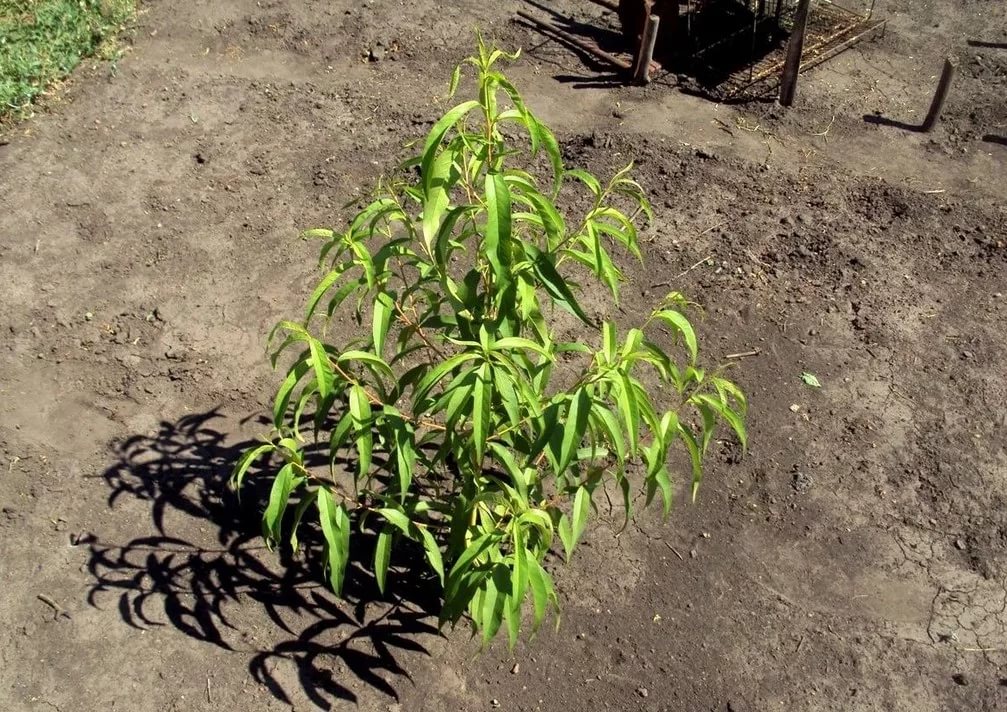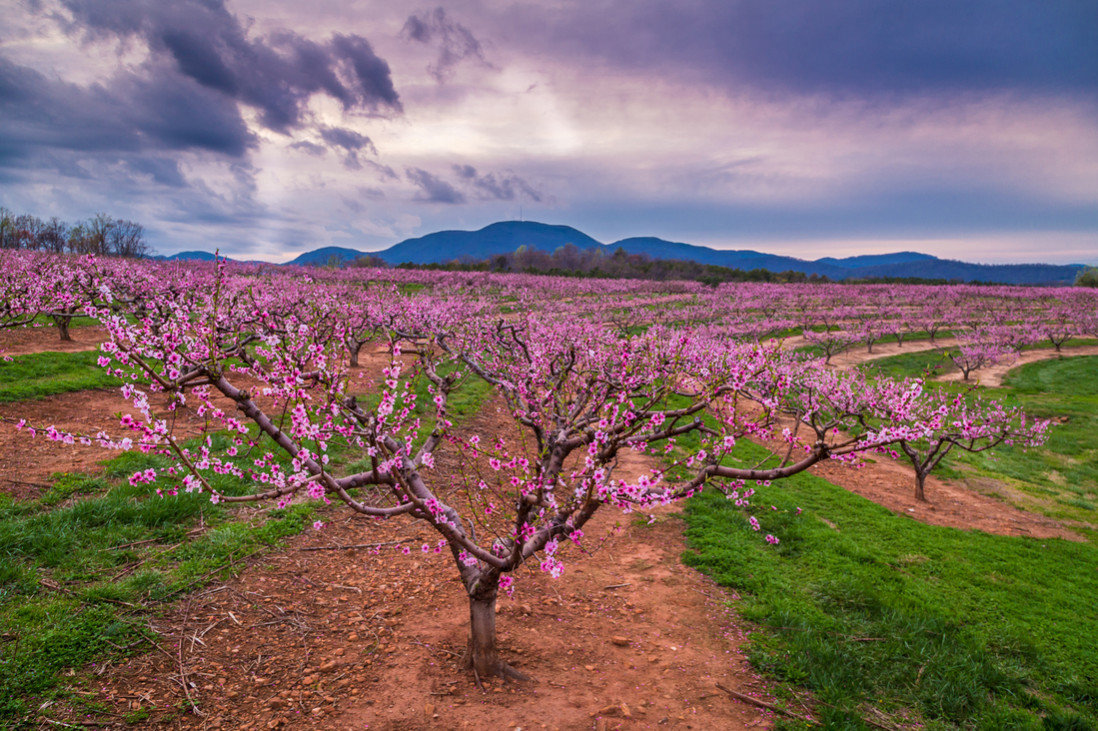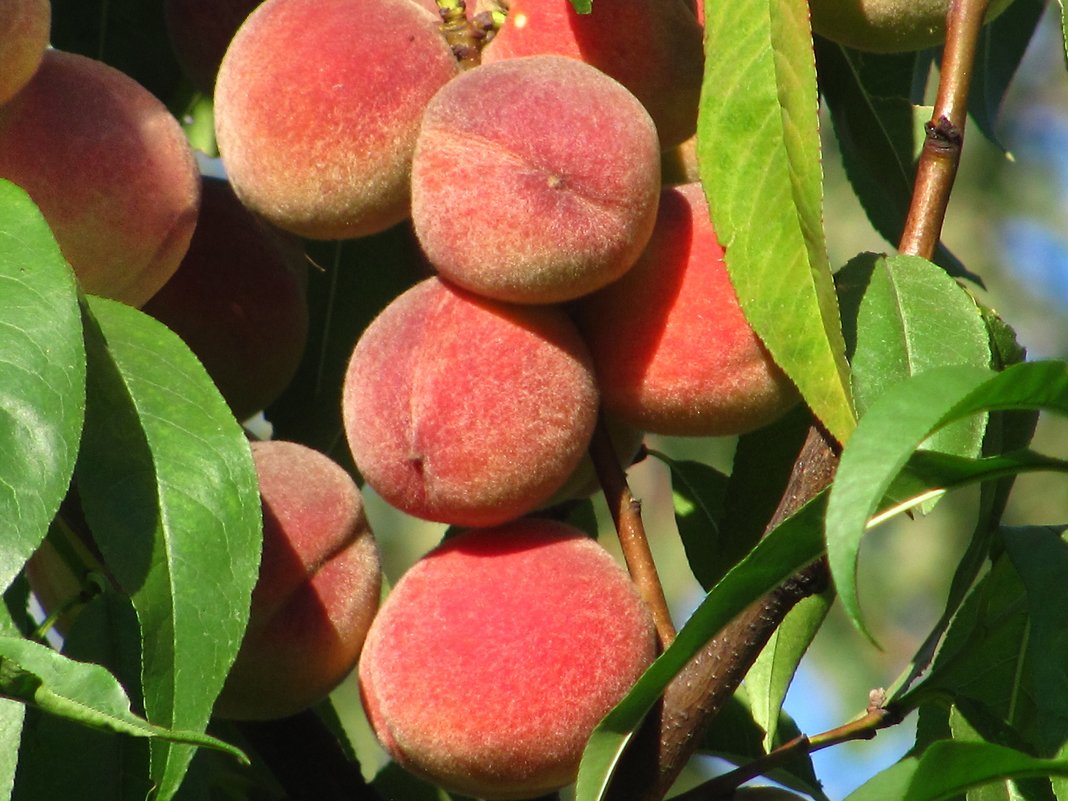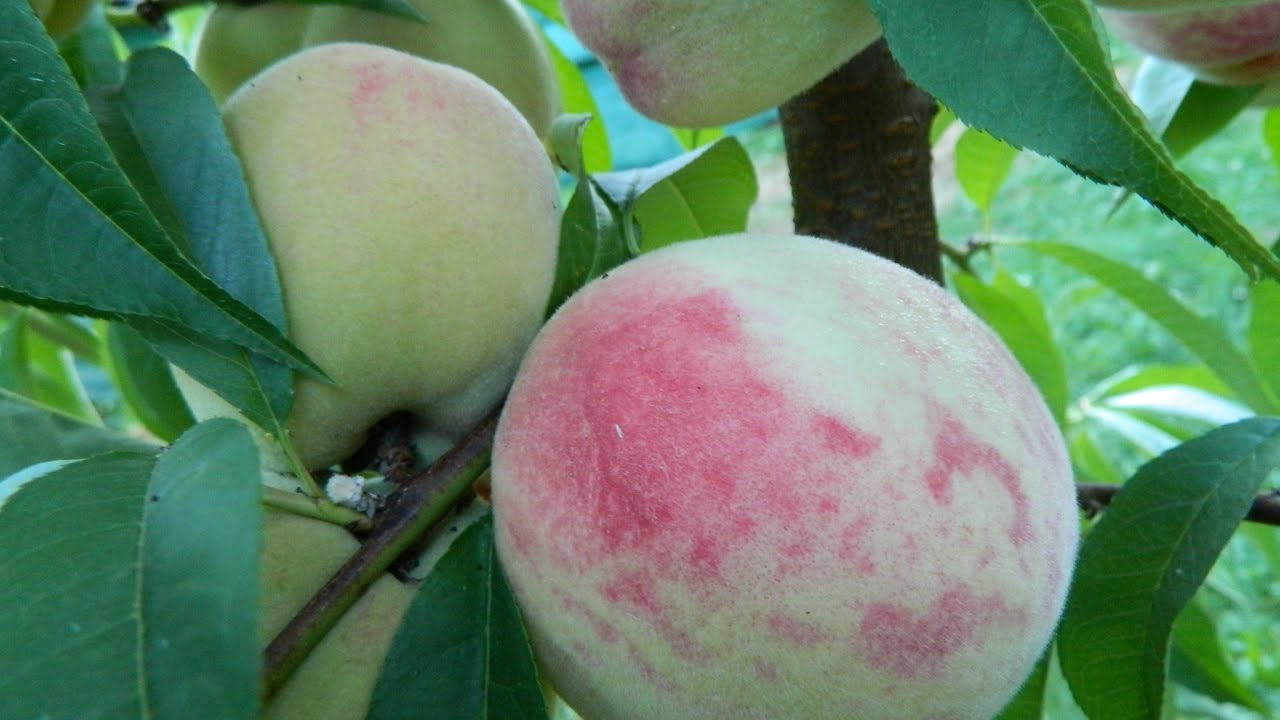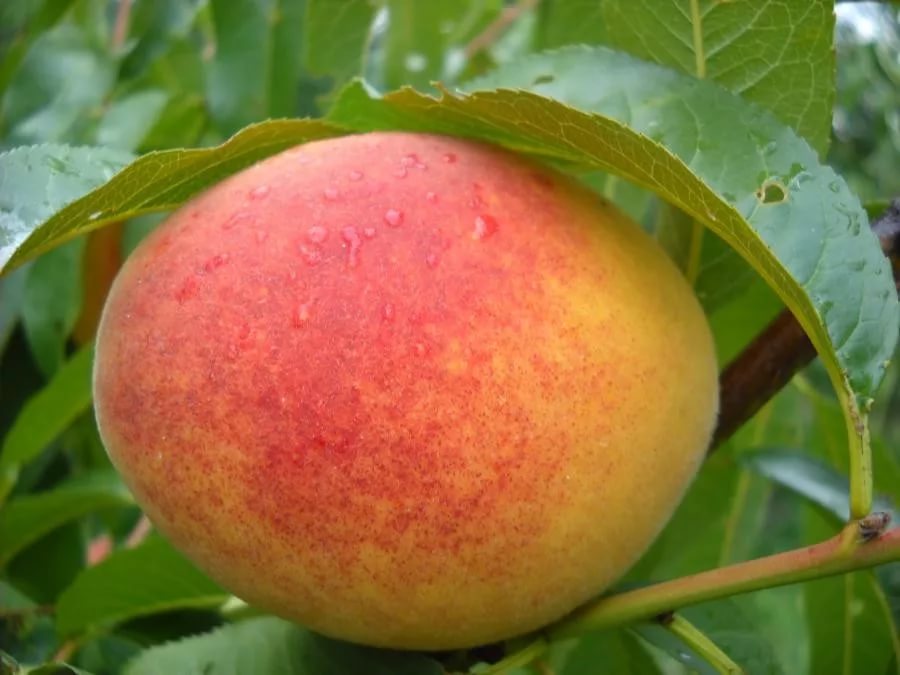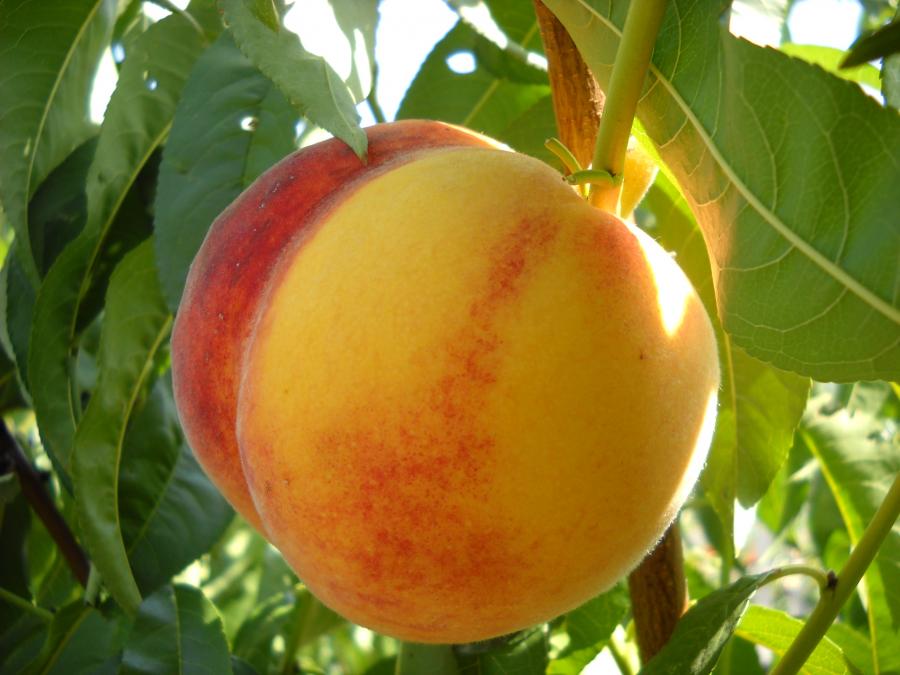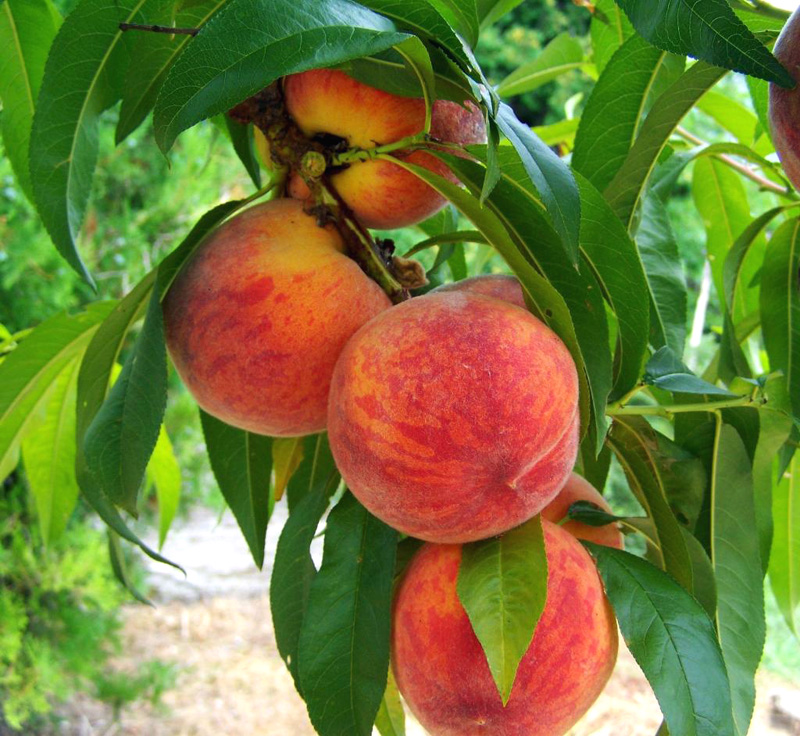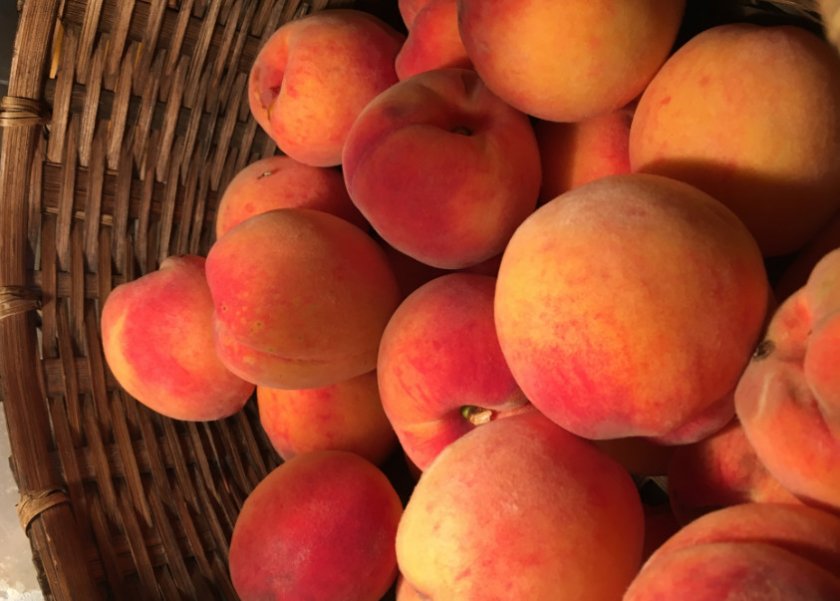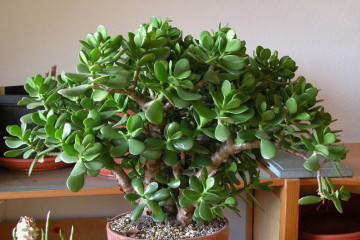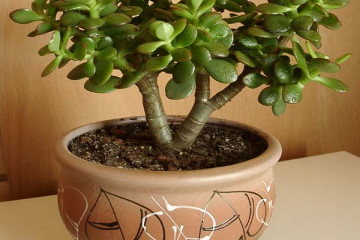What does a peach look like and how to plant a tree
Content:
- How and where do peaches grow
- Description and botanical characteristics of the plant
- Stages of development
- How many years does a peach bear fruit
- What varieties are grown in Russia
- How to plant a peach tree
- How to care for a peach tree and how to fertilize
- Why does a peach shed fruit?
- Harvesting
- Peach propagation by seeds
What is a peach and how to plant it correctly in order to achieve a good harvest in the future - these questions concern both beginners and experienced gardeners. You should dwell on them and study in more detail.
How and where do peaches grow
Peach is a southern, sunny fruit that develops correctly only in warm climates:
- Moldova;
- India;
- Afghanistan;
- Syria.
Peaches also grow in Greece, in some regions of Italy, France, Ukraine and Russia. This fruit is grown in large quantities in the Caucasus.
Not too tall peach trees or shrubs (with proper crown formation) feel quite comfortable next to other fruit trees. But they need a little more light, sun and heat.
They do not tolerate spring frosts and winter colds, therefore it makes no sense to plant peaches in regions where winters are too harsh without special preparation (shelter). Plants are likely to die, and if not, they will not have the strength to form a large number of buds.
Description and botanical characteristics of the plant
Common peach (in Latin - Persica vulgaris Mill) is a fruit used to create delicious jam, preserves, compotes, cobbler and jams. And from the bones they make cosmetics, for example, oils, which are quite popular among women and girls.
Interestingly, this plant is now almost never found in the wild (this is a fact confirmed by pharmacognosy and indicated in any pharmaceutical certificate), but not far from Beijing, trees were discovered that can be considered closely related to domestic peaches (wood and fruits are similar), however, they cannot be cultivated tried.
The common peach is a tree with lanceolate leaves that have jagged edges. Flowers appear before the development of the green mass. Some of them are pink, some are red.
What family of plants does the peach belong to?
Peach belongs to the Almond subgenus, Plum genus, Pink family. This family consists of 3 subfamilies (Dryad, Spirey, Rosan), 14 tribes and 4 subtribes, plus 2 more genera go beyond any ranks. It includes:
- plum;
- Apple tree;
- pear;
- cherry;
- almonds (not to be confused with passion fruit);
- strawberry
- raspberry;
- rosehip;
- rose flower;
- cherry laurel;
- spirea;
- Rowan.
Many medicinal and tanning plants are also classified as Pink. Peach is a friend of apricot.
Peach cut
Peach is a fruit with a bone. Its shape depends on the variety. But most of the fruits are round or slightly elongated, elongated-elliptical.A groove runs along one side. The skin is soft, usually covered with fluff, velvet. But in some varieties it can be smooth and even firm, therefore, on the market and in the store, you can often find completely different externally and internally peaches, for example:
- with a velvety skin and an easily detachable bone (simple peach);
- with velvety skin, but with pulp that cannot be separated from the bone (pavia);
- with smooth (bare) skin and easily detachable bone (nectarine);
- glabrous, to which the bone is not separated (bruignon).
The pulp can be fibrous or cartilaginous. Sectional fibers can be seen in table varieties, while cartilaginous flesh is characteristic of varieties intended for conservation. The color of the flesh can also vary, there are fruits with yellow, white and red cores. Most of the fruits in many varieties are also very juicy, they contain from 60 to 90% of water.
The size also depends on the variety, there are peaches with a diameter of 10 cm, and there are also very small ones, barely larger than an apricot. Caring for peaches is painstaking work.
Stages of development
From the moment of planting to the receipt of the first fruits, at least 4 years can pass. When planting a bush or tree, it is important to follow a certain technology, trying to keep at least 3 meters between the peach and other plants.
If the winter is cold, the tree trunk is wrapped with something warm, such as an old blanket or fur coat. As much snow as possible should be poured onto the root space. At -16 degrees Celsius, the peach, if it does not die, then next summer will definitely not give such a large harvest that the gardener expects.
How many years does a peach bear fruit
The timing of fruiting depends on the climatic zone of growth, the timing of planting and the method of care. Even the location of the tree relative to other cultivated plantings in the garden, and that matters.
On average, a healthy tree bears fruit for about 10-15 years, while some plants are 30 or more years old.
What varieties are grown in Russia
In Russia, peaches are mainly grown in the Crimea and the Caucasus, as well as in the Moscow region. Much depends on the variety: some, especially frost-resistant, can be grown in less favorable conditions, therefore every gardener knows what a peach tree looks like.
Kiev early
Self-pollinated early-ripening variety. Differs in high frost resistance and the ability to quickly recover from frostbite. Bred on the basis of Gross Mignon and Kashchenko 208 in 1939. Early Kiev has a subspecies Kiev late.
This peach variety:
- straight, medium-height trunk (up to 4 m);
- bright pink goblet inflorescences;
- compact, medium-dense crown, shaped like a ball;
- narrow, elongated dark green leaves.
Fruits are large, round, possibly flattened from the sides, weighing from 80 to 100 g each. The peel is soft, velvety, the pulp is very juicy, the peach itself is sweet, almost honey.
The color of the fruit can be different, it contains all shades of yellow, pink and raspberry, there are also cream-colored peaches. The stone is medium, resembles a boat in shape, it separates from the pulp poorly.
White Swan
Medium-sized peach with a sprawling spherical crown. Round fruits weigh 150-200 g each. The skin is light, peach-colored, sometimes with a blush. The pulp is creamy white, fibers are present, does not darken after cutting. The stone is medium in size, it can be easily separated from the pulp. Ripe peaches are sweet, aromatic, honey notes are felt.
The tree can withstand severe frosts (up to -30 degrees Celsius) and prolonged drought.
Golden Moscow
The peach tree of this variety is medium-sized with beautiful pink flowers, dark leaves and large (up to 180 g) fruits. The crown has the shape of a ball, almost does not need to be formed. The skin is yellow, velvety. The pulp has a rich yellow-orange hue. The stone is large, it separates poorly. The fruits are sweet, but they have a slight sourness.
Golden jubilee
This is a high-yielding variety, created in 1921. The tree is tall (3-5 m) with a wide-spreading sparse crown, bright green leaves with a yellow tint.
- The flowers are pink, their shape resembles a bell.
- The fruits are golden yellow with a velvety skin, broadly oval, weighing on average 120-160 g.
- The fibrous pulp has a sweet and sour taste.
- The stone is medium, it is easy to separate it from the pulp.
Fruiting begins 2 years after planting, which is very good for a peach. The tree needs pollinators, but it can do without them. The disadvantages of the variety include poor keeping quality of fruits and their quick shedding during ripening.
Ruby Prince
The homeland of this variety is the USA. A medium-sized tree usually ripens from 50 kg of dark red fruits, weighing 250-300 g each. When cut, the taster is presented with a juicy yellow pulp, very juicy and fleshy. The variety is high-yielding, peaches tolerate transportation well in containers, therefore it is grown on an industrial scale. The taste of the fruit is pleasant, sour-sweet.
Favorite Morettini
Italian variety of peaches. The tree is medium in size, does not tolerate cold, dies at temperatures slightly below -15 degrees Celsius. But it does not need pollinators, which can be considered as one of the advantages.
Fruits are medium, weigh up to 140 g, yellow with red spots. The pulp is beige, the stone is separated from it with great difficulty. Peach is often transported, while it is consumed both fresh and processed into juices and jams. The fruits do not fall off the tree, but if there are too many of them, they may not reach the desired size and weight, they become smaller.
Saturn
American peach variety, up to 3.5 meters high. Fruits are flattened, covered with a fluffy dusting, yellowish-pink, with a well-separated stone. They weigh a little, on average from 60 to 100 g. The yield is above average: 40-60 kg per tree. The fruits can be kept fresh for a long time.
Kremlin
The variety was bred in the Crimea, does not tolerate heat and cold. The fruits are tasty, juicy, but they are mainly consumed fresh, transportation over long distances is almost impossible. But the Kremlin peach can be grown from the stone without losing varietal properties, in addition, it almost does not get sick, which can be considered one of the main advantages of the variety over the rest.
Veteran
Canadian variety of peach, weighing up to 140 g. Round fruits are covered with bright yellow skin with a blush. The flesh is yellow in color, not dense, but juicy and aromatic. Representatives of this variety tolerate droughts well, but when the air temperature drops to -22 degrees Celsius, they begin to hurt, their buds, flower ovaries and roots are damaged.
Siberian
Mid-season, frost-tolerant variety. The first fruits appear 3 years after the seedling is planted. Round peaches, weighing 120-140 g each. There is fluff on the skin; it itself is bright yellow with red spots of blush.
- The fibrous pulp has a pleasant yellow tint and an incredible fruity aroma.
- The bone is easily detached.
- Peaches keep well and can be transported.
The obvious disadvantages include only the need for stagnant pruning of young shoots, but knowing how to care for an ordinary peach, you can easily cope with the cultivation of a Siberian.
"Donetsk White"
Yellow fruits weigh up to 130 g. The pulp is transparent, whitish in color, veins can be traced near the stone. The bone itself is medium, it cannot be separated from the pulp. The variety is winter-hardy, the fruits are most often consumed fresh.
Variety "Harnas"
An early variety for dessert purposes. The tree is tall, winter-hardy. Ripe fruit weighs on average 150-180 g. The skin is bright red, not pubescent. The pulp is sweetish-sour, yellow, well separated from the stone. The fruits tolerate transportation well, do not fall from trees after ripening.
Delicious "Jaminat"
The fruits are large, yellow, oval in shape, weighing 130-160 g. The pulp is sweet and sour, has fibers, bright orange with flashes of yellow. Trees tolerate frosts well, the variety has a universal purpose.
Donskoy
Frost-resistant self-fertile variety. The fruits are small, up to 60-80 g, but about 50 kg per season can be harvested from one tree. The tree itself is high (3.5-4 m). The pulp is very juicy, dense, and a slight sourness is felt during tasting.
"Irganayskiy late"
A medium-sized tree with a spherical, flat or spreading crown. Fruits weigh 120-150 g, covered with red spots that look beautiful on a yellow background. The skin is soft, pubescent, the flesh is yellow, the stone is separated freely.
Frost
Medium late variety, originally from America. The tree is frost-resistant, well resistant to diseases. The fruits are massive, weigh up to 200 g, orange, covered with a purple blush. The pulp is yellow, sweet and sour, fibrous, easily separates from the stone.
Cardinal
American early variety. Fruits are medium in size, weighing up to 150 g, yellow, at the time of ripening, acquiring a carmine hue. The pulp is fibrous, pale yellow, the bone is almost not separated from the pulp. They are grown mainly in the southern regions, since the trees do not have a high level of winter hardiness.
Fury
The best of the late varieties, producing the largest peach fruits in the world. The mass of one fruit is about 400-450 g. The skin is dark red, the pulp is bright, almost orange, juicy, well separated from the stone. The tree is self-pollinated, not demanding on growing conditions.
Collins
Medium sized trees with a globular crown and dark green leaves. The fruits are spherical, weigh up to 130 g, the skin is orange with a red blush, velvety. The pulp is yellow, juicy, sweet and sour. The bone is separated from the pulp, but this action requires little effort.
Dagestan gold
Small oval fruits of a yellow hue weigh up to 100 g. The skin is velvety, the pulp is bright yellow and even orange, the stone does not separate from it. The variety ripens early, is self-fertile, with an average ripening period, is considered winter-hardy, but it hardly tolerates diseases.
Juicy "Redhaven"
A hybrid variety that feels great in the central zone of Russia. The tree is tall (5 m) with a huge spherical crown. Medium-sized fruits - 120-160 g, orange with velvety skin, very sweet. The stone is easily separated from the fetus. The variety is famous for its high frost resistance.
How to plant a peach tree
A peach can be grown from a seed or a young seedling that has already grown up can be purchased. In the second case, immediately after the purchase, they start planting a tree in the garden. They do it like this:
- A cone-shaped pit is prepared.
- The roots of the cutting are placed at the bottom of the pit (the grafting site should not be covered with earth, it is placed about 2-3 cm above the surface).
- The roots are evenly spread in the hole, earth is poured on top.
- After the earth covers all the roots, a bucket of water is poured into the pit.
- Further, the roots are completely covered with earth and the soil is tamped around the trunk.
Sprinkle the peach with another 2-3 buckets of water.
How to care for a peach tree and how to fertilize
The peach tree is very moody and needs careful maintenance. It needs to be cut regularly, fed.
Spring peach pruning
Prune peaches before flowering and bud formation. The pruning time depends on the climatic zone and the prevailing weather. The result of the work carried out should be the appearance of a bowl-shaped crown and a stem, up to 60 cm high.In the lower tier, 4-6 shoots are left, on average 5, the distance between individual branches should be about 25 cm.
Top dressing
Peach trees are fed 6 times a year, while the first 4 dressings are carried out in the spring:
- before the kidneys swell;
- during bud break;
- in the midst of flowering;
- after the flowers wither.
Summer feeding is optional, it is carried out if necessary. In the fall, the trees are fed until the leaves fall. Moreover, in all cases, organic and mineral fertilizers are used.
Bloom
Most peach varieties bloom in mid-April - early May. Flowering lasts about 5-15 days if it is hot outside, and about 21-22 days if the weather is cool, wet.
It is important to find out how a peach blooms, when a particular variety blooms, even before planting.
Why does a peach shed fruit?
Peach sheds fruit for several reasons.
- A feature of the variety.
- Often this happens when weather conditions change or illness.
- A pest, the eastern moth, becomes a frequent cause of fruit dropping. She eats shoots, does not disdain fruits.
A tree can also get rid of the harvest due to carelessness on the part of the gardener - overflows, lack of watering, untimely feeding.
Harvesting
Harvesting begins in late June or mid-July and continues until early September. Ripe peaches are used to prepare various desserts, they are eaten fresh.
In the northern regions, the peach may ripen later, in which case the harvest begins only in August.
Peach propagation by seeds
Almost all peach varieties can be grown from seed. Step-by-step instructions on how to transplant and propagate berries are as follows:
- the kernels extracted from the bone are placed in warm water for 2-3 days, they should swell;
- swollen seeds are planted in a pot to a depth of 4-5 cm;
- planting is watered with water and covered with foil.
The greenhouse is removed daily, the plants are ventilated and watered if necessary. As soon as sprouts appear, the film is removed.
Every inhabitant of our climatic zone probably knows what a peach looks like. Moreover, despite the fact that peach is a tree that does not grow everywhere, but only in warm, southern regions. Many gardeners living in the north, year after year, wonder how to plant a peach in unfavorable conditions for it. In fact, growing peaches is time consuming.
